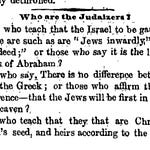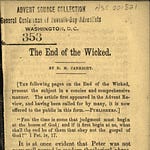Timeline of the World Council of Churches (WCC) Shift to Secular Ecumenism and Marxist “Liberation“ Theology (through 1976).
1. Formation of the World Council of Churches
1948: The founding assembly is held in Amsterdam with 147 churches. The primary aim is to promote Christian unity to fulfill Christ’s prayer for oneness (John 17:21).
2. Evolution of Unity Concepts
1954: The second assembly in Evanston attempts to address divisive concepts of unity, but divisions persist.
1961: The third assembly in New Delhi sees a significant influx of Orthodox and Anglican churches, shifting the balance and introducing “catholic” or episcopal perspectives into discussions on unity.
3. Emergence of Third World Influence
1968: The Fifth Assembly in Uppsala is marked by an increase of churches from developing countries, changing the WCC’s priorities towards sociopolitical issues rather than ecclesiological unity.
1968-1975: A period of transformation is framed as a shift from a focus on denominational unity to involvement in secular ecumenism.
4. Reassessment and New Priorities
1969: The establishment of a “Program to Combat Racism,” reflecting a shift towards addressing social justice issues.
1970-1975: The development of “theology of liberation” begins, framing Jesus Christ as a political revolutionary. This causes significant controversy, particularly regarding the endorsement of violence.
5. Nairobi Assembly
1975: The Fifth Assembly in Nairobi highlights sociopolitical issues, reflecting a definitive commitment to liberation theology. Key figures advocate for active involvement against oppression, emphasizing social justice over traditional ecclesiological concerns.
This assembly reveals deep divisions among delegates about the church’s role in social justice and political actions, establishing the direction of future WCC endeavors.
6. Institutional Changes and Leadership Shifts
Nairobi Assembly: Majority leadership includes representatives from Third World countries, signaling a shift in influence. Dr. Philip Potter continues as General Secretary, overseeing this new direction.
7. Response to the Shift and Divisions
Churches from Germany, Britain, and the United States begin to distance themselves from the WCC, accusing it of deviation from basic Christian faith and ethics.
Prominent voices within the assembly like the Bishop of Truro and Methodist leaders express opposition to support for violent resistance.
8. Future of Unifying Efforts
Post-Assembly Discussions: Significant discussions occur about maintaining the search for ecclesiological unity outside of WCC structures. Some sections move toward a redefined concept of unity centered on “conciliar fellowship”.
Ongoing Initiatives: The Roman Catholic Church continues to explore ecumenical collaborations, indicating a desire for unity based on discussion of common faith, while maintaining doctrinal integrity.
9. Conclusion and Reflection
General Consensus: The WCC’s theological transformation is recognized as a new precedence toward sociopolitical involvement at the expense of traditional ecclesiological goals. Observers express concern over the future effectiveness of WCC, equating it to a lesser version of the United Nations regarding ecclesial matters.
Commitment to Unity: While engagement with newfound priorities continues, the pursuit of unity based on scriptural truths remains a focus for many who still desire a traditional ecclesiastical framework.
This timeline outlines the evolution of the WCC’s theological direction amid shifting global influences, illustrating tensions between traditional ecclesiastical priorities and emergent sociopolitical commitments, culminating in a significant redefinition of the organization’s objectives.










